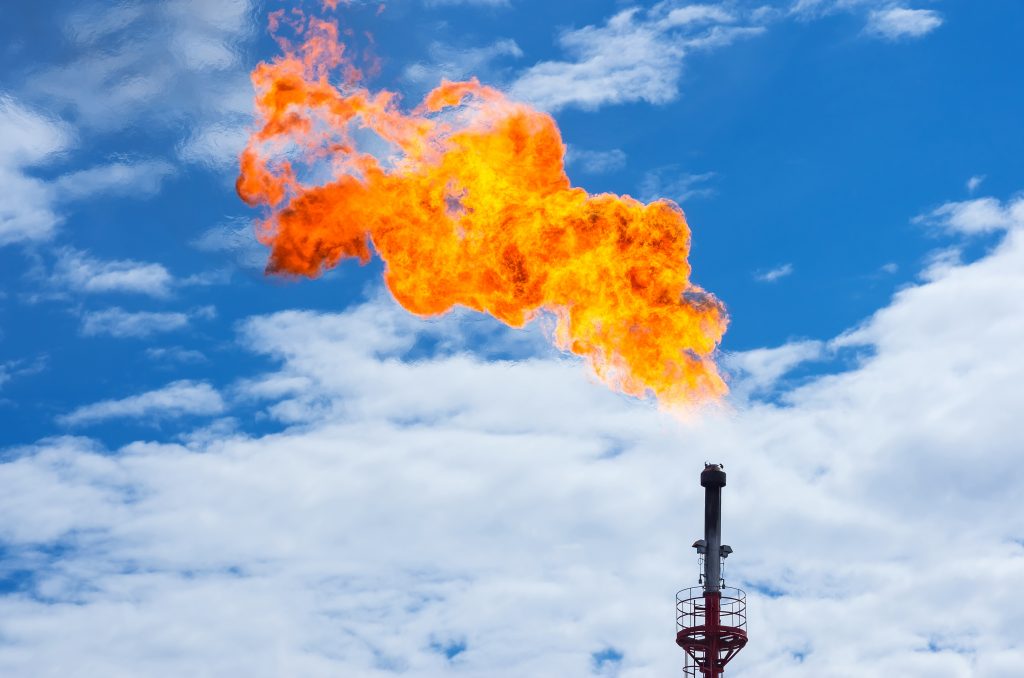Is Natural Gas the Answer to Crypto’s Dirty Energy Problem?
Market dynamics such as weather and pipeline outages have pushed natural gas prices higher in recent weeks, but interest from the cryptocurrency mining sector may also be influencing the market.

Natural gas has been a hot trade in recent weeks, and the surge in interest may not be linked to the supply-demand factors that traditionally drive volatility in this market—at least not entirely.
According to new reports, it appears that much like the rest of the economy, the growing stature of the cryptocurrency industry may be expanding its influence into global energy markets.
Natural gas is key to the U.S. economy because it is widely used to heat and cool homes and businesses. As a result of this critical role, disruptions in the natural gas supply chain can often catalyze dramatic swings in the underlying price of gas—much like what is observed when crude oil supplies get constrained.
As most are aware, a recent ransomware hack of the Colonial Pipeline took nearly 5,500 miles of the energy supply chain in the Southeastern United States offline. Considering the importance of that artery in delivering much-needed oil and gas, it was no great surprise to see the prices of those commodities spike.
Going back to early April, the price of natural gas (quoted in “mmbtu”) has now risen from roughly $2.46/mmbtu to approximately $3.10/mmbtu—an increase of about 26%.
And there’s a lot more to this burgeoning story.
In conjunction with supply-side problems linked to the Colonial pipeline, the natural gas market also experienced a shock on the demand side of the equation. As a result of cooler-than-normal temperatures in the United States, heating demand has remained firmer than usual at this time of year.
Moreover, it’s expected that the shift from cool weather to hot weather will be abrupt—meaning many Americans could be turning on their air conditioners not long after shutting down their furnaces.
As a result of those weather dynamics, demand for natural gas is expected to be higher than usual—a reality that has almost certainly contributed to the upward trend in prices.
Interestingly, natural gas may also be seeing increased interest due to another unexpected storyline. Namely, the emerging concern that cryptocurrencies are drawing upon an outsized amount of the world’s electricity production capacity.
Is Natural Gas the Answer to Crypto’s Energy Problem?
As many are well aware, cryptocurrency transactions are authenticated and authorized by legions of computers across the world that are plugged into the crypto network. This process is known as “proof of work.”
While this process provides security and transparency, it also apparently sucks down an immense amount of the world’s available electricity.
In fact, it’s now estimated that the total consumption of electricity associated with the bitcoin (BTC) network has grown to 0.5% of total daily capacity. For reference, that chunk is comparable to the entire electricity consumption of the country of Argentina, a country populated by more than 44 million people.
Furthermore, if nothing is done to stop this trend, projections suggest the consumption rate could increase exponentially in the foreseeable future—as high as 5% by some measures.
Moreover, because many cryptocurrency miners placed their operations adjacent to geographic locations with access to low-cost energy networks, it’s further believed that much of the crypto industry is likely fueled by one of the highest-polluting sources of energy on the planet: coal.
And that’s where the natural gas element of this story comes into play.
Obviously, it would be preferable if the cryptocurrency market were powered by renewable energies such as solar, wind or hydroelectric power. But the reality is that while those energy sources are expanding at a rapid rate, they probably won’t be able to grow quickly enough to significantly reduce the carbon footprint of the crypto sector—at least not anytime soon.
However, some are now projecting that another source of relatively clean and cheap energy may assist in bridging the gap between crypto’s current reliance on fossil fuels and its renewable future: natural gas.
Innovative Natural Gas Solutions Could Help Crypto Sector
Prior to 2005, natural gas supplies in the United States were dwindling. As a result, prices were rising. But the 21st century shale boom in the United States flipped that script completely.
The combination of technological advancements in hydraulic fracturing and horizontal drilling enabled the United States to significantly increase its production of oil and natural gas. The success of the shale revolution has been so thorough that the United States is now among the top several energy producers on earth, along with Russia and Saudi Arabia.
Proof of the shale boom’s impact can easily be observed through the following statistic: Shale mines now account for 20% of total natural gas production in the U.S., as compared to only 1% 20 years ago.
That immense growth in available supplies also impacted broader price trends in natural gas markets over the last 15 years. Back in 2007, natural gas prices were more than double what’s observed today (above $7/mmbtu).
But that all changed with the shale boom. Instead of constrained capacity, the market was awash with natural gas, and prices acted accordingly. The crash in prices was so severe that many electricity producers in the United States switched from coal to this now-abundant resource.
And lower prices weren’t the only benefit.
Current estimates suggest that natural gas power plants produce 50%-60% less carbon dioxide than their coal-powered equivalents. It’s that reduced environmental impact that seems to be pushing the natural gas narrative into the forefront of the cryptocurrency energy challenge.
As a result of recent pollution concerns, some cryptocurrency miners are already setting up mining networks adjacent to oil and natural gas production facilities. The goal of these efforts is to harness what’s known as “flare-ups.”
“Flaring” refers to the controlled burning of natural gas, and is a common practice in oil/gas exploration, production and processing operations.
Oil and gas producers often flare natural gas as a way of disposing of fuel they aren’t able to process. Flare-ups are easily recognizable because they look like giant, continuously burning matchsticks—typically located adjacent to oil and gas fields, or oil and gas processing facilities.
The International Energy Agency (IEA) estimated that more than 150 billion cubic meters of natural gas were flared in 2019. That amount is roughly equivalent to the total amount of carbon dioxide emitted by Italy in a single year. The chart below highlights the countries flaring the most natural gas back in 2012.
It appears that miners discovered this wrinkle in the energy markets and are now working strategically to harness this “garbage” energy. The process goes like this: An energy company converts flared natural gas into electricity, and that power is then funneled into nearby “proof of work” cryptocurrency operations.
It’s easy to see how this solution could be superficially attractive and potentially efficient. By harnessing energy that would otherwise be wasted, cryptocurrency miners could theoretically reduce their environmental footprint.
The bigger question, however, is whether it could be a viable solution at the scale necessary to quench the seemingly endless thirst of the crypto sector. Regardless of this solution’s exact fate, it seems certain that natural gas will play some role in cleaning up crypto’s dirty energy problem—even if only temporarily.
As such, investors and traders in energy markets may want to take note and monitor this narrative accordingly.
For more information about the topics covered in this post, readers may want to tune into the following programming on the tastytrade financial network:
- The Skinny on Quantitative Finance: What’s a Bitcoin?
- Market Measures: Seasonal Trading in Natural Gas
To follow everything moving the markets, readers can also tune into TASTYTRADE LIVE weekdays from 7 a.m. to 4 p.m. Central Time at their convenience.
Subscribe to receive 10 issues of Luckbox in print! See SUBSCRIBE or UPGRADE TO PRINT (upper right) for more info.
Sage Anderson is a pseudonym. He’s an experienced trader of equity derivatives and has managed volatility-based portfolios as a former prop trading firm employee. He’s not an employee of Luckbox, tastytrade or any affiliated companies. Readers can direct questions about this blog or other trading-related subjects, to support@luckboxmagazine.com.



















